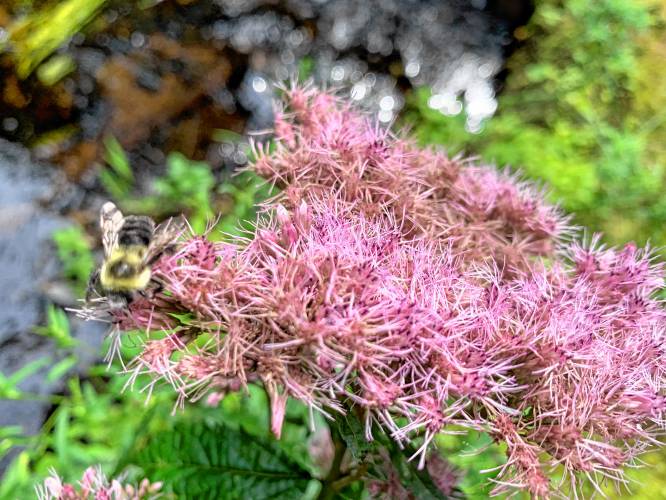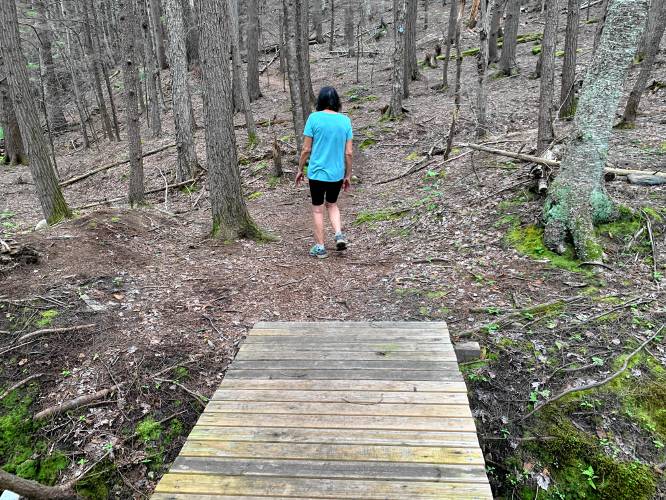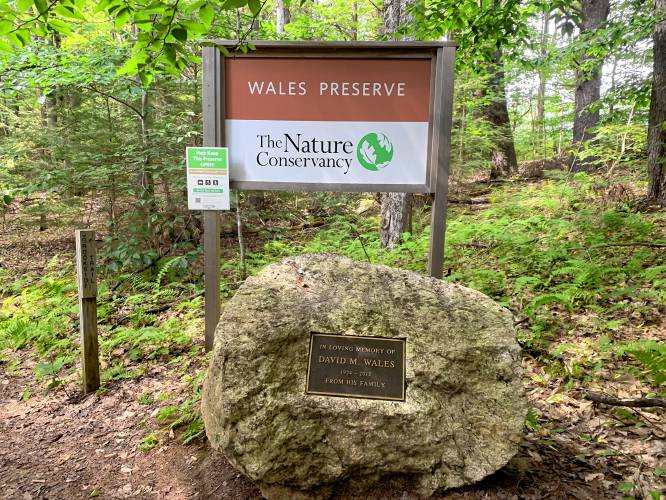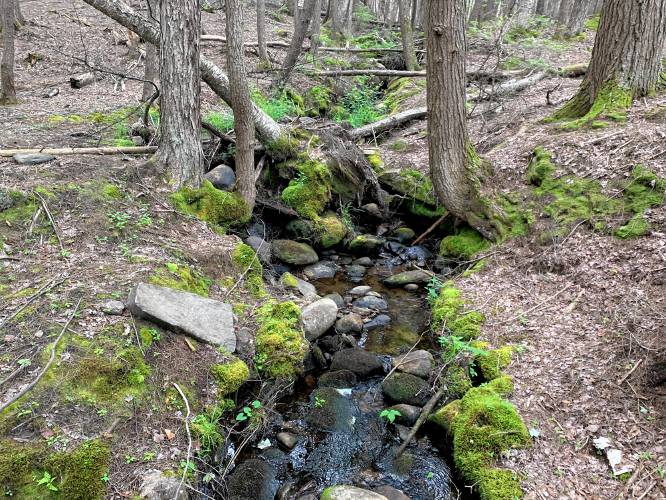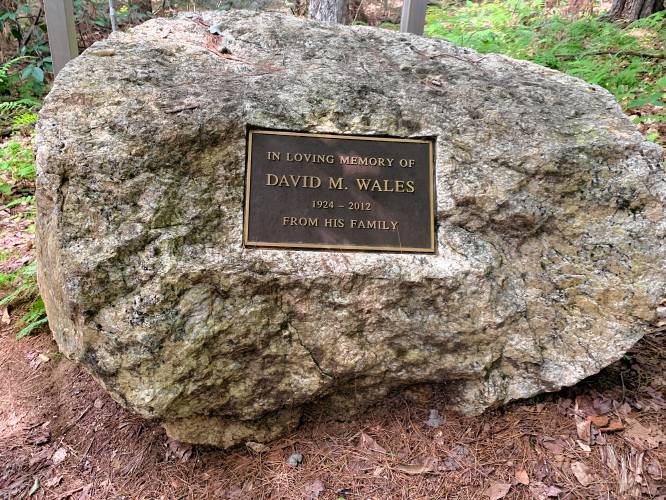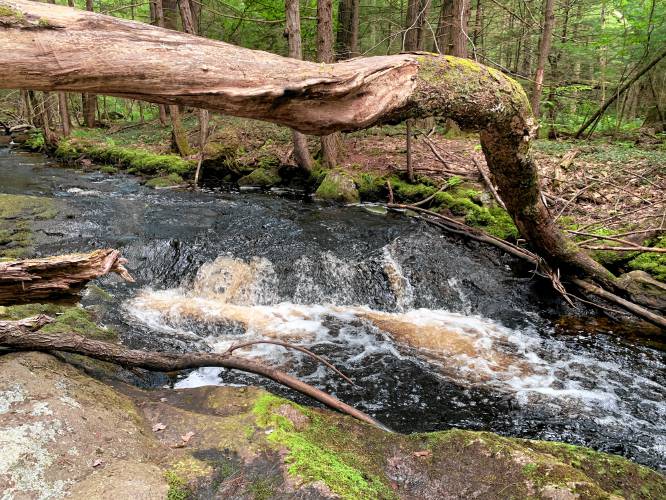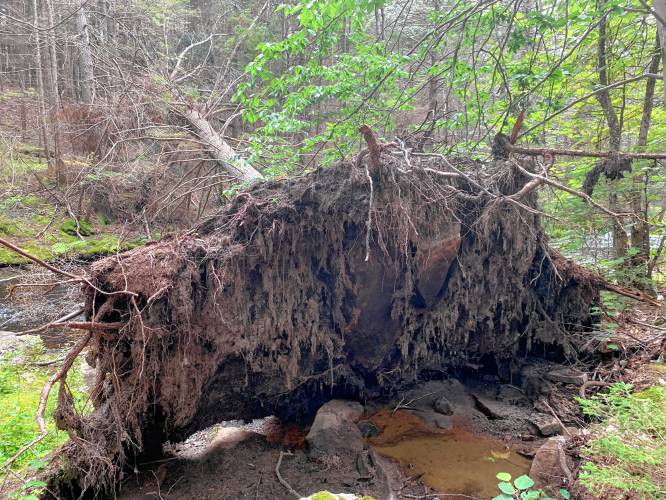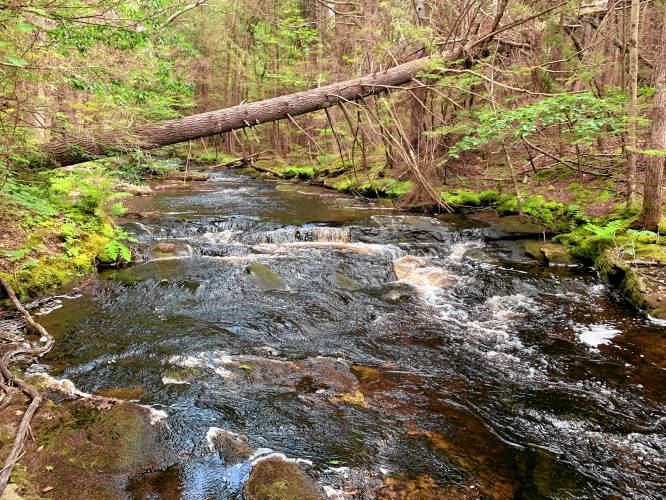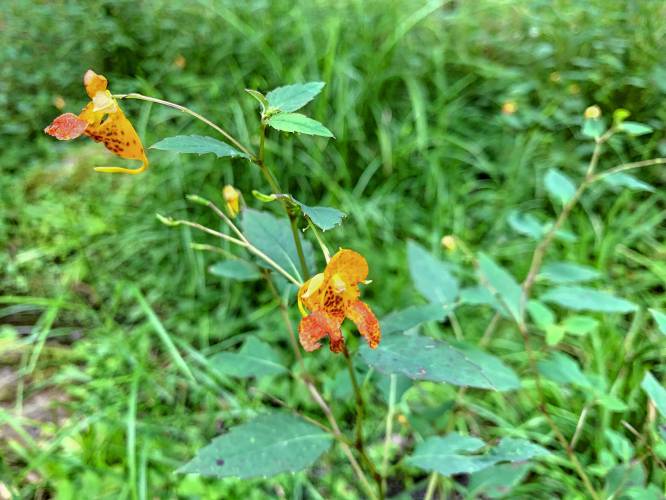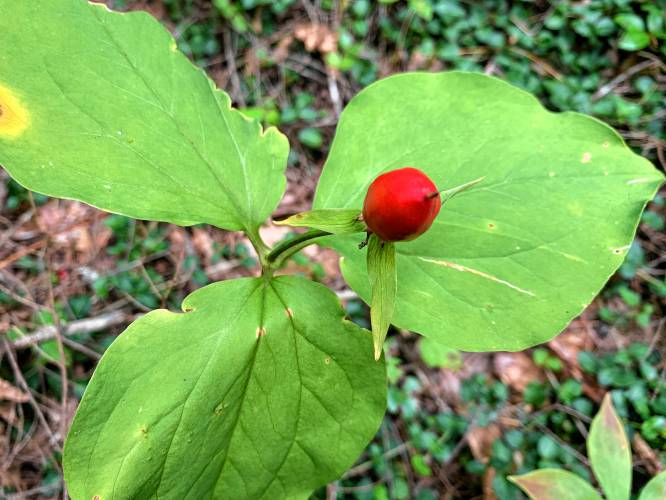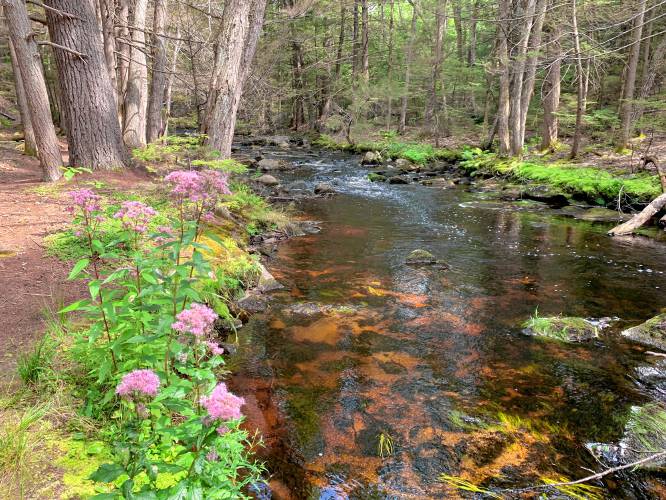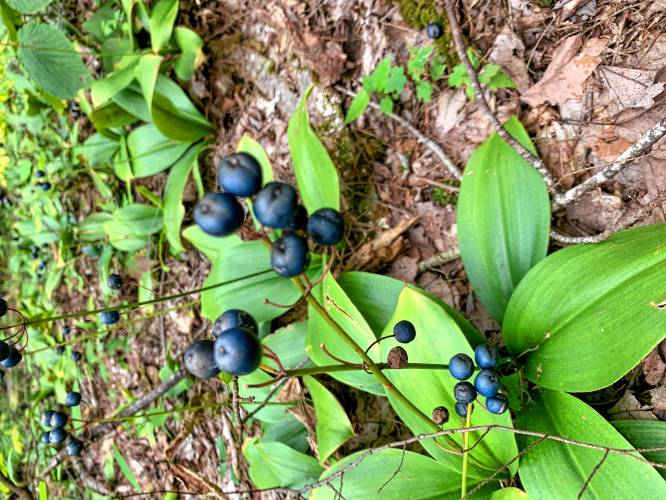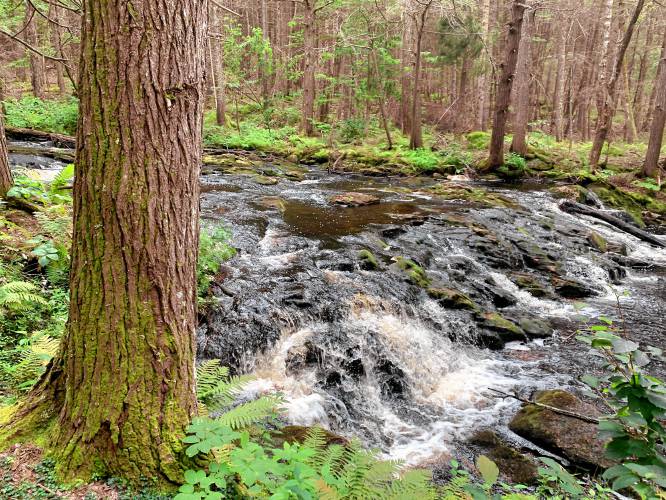EXPLORING MONADNOCK TRAILS – A walk along the water in Sharon’s Wales Preserve
| Published: 09-04-2023 2:36 PM |
The Wales Preserve in Sharon offers a stroll along the Gridley River, listening the the rushing of the water and offering some great viewing spots of the several small cascades that occur as you walk the length of the trail.
The Wales Preserve is a total of 48 acres, donated to The Nature Conservancy by Ralph and Betty Wales. Ralph Wales donated 23 acres in 1966, and they donated an additional 25 acres, including the ones abutting the river, in 1986.
Fittingly, the start of the trail has a few memorials to members of the Wales family, inscribed into a large boulder and bench. But it’s when you get beyond the entrance and to the river that the real, scenic walk begins.
I’ve visited this trail twice, at first put off by the shortness of the trail – which only goes a bit over a mile. But the river views brought me back for a second go.
The river is easily viewable from the trail itself. It mainly follows the riverbank, but there are also several spots along the trail where rock outcroppings stick out into the water, easily accessible from the trail, where you can walk out and get some really nice views or photos of the river.
This trail along the river is not difficult. It meanders along the side of the river, which gives it a pretty flat grade. What inclines there are – such as the entrance, which declines a short way down to the river – aren’t terribly steep, and are only short distances. If you want to explore a more-wooded hike, there is a loop of the trail that meanders away from the river, which is probably a bit more challenging but still doable for a beginner hiker, given its manageable length.
Due to the proximity to the water, in addition to the river views, you also see some pretty spectacular examples of plant life, including some stunning wildflowers. During mid-August, the river was lined with bunches of lilac-colored Joe-Pye weed, which was attracting bumblebees. On the wooded side, every so often, you might spot a dab of bright red, representing a bud of a painted trillium, and dozens and dozens of clusters of what appear to be bright blue berries, indicative of the bluebead lily, also called the yellow clintonia (for the color of the plant’s actual flower).
And mushrooms. At least something was enjoying this rainy summer, because I’ve never seen so many mushrooms as I have this summer, and the Wales Preserve was no exception, with a particularly bright orange specimen a common sight along the trailside.
Article continues after...
Yesterday's Most Read Articles
 ConVal officials propose one athletic director position
ConVal officials propose one athletic director position
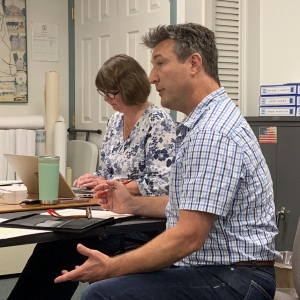 Sixteen-unit development draws ire from neighbors in Jaffrey
Sixteen-unit development draws ire from neighbors in Jaffrey
 UPDATE: Drivers identified in Jaffrey dump truck crash
UPDATE: Drivers identified in Jaffrey dump truck crash
 Mary Lawler remembered for a life of service
Mary Lawler remembered for a life of service
 Scott Bakula starring in Peterborough Players’ ‘Man of La Mancha’
Scott Bakula starring in Peterborough Players’ ‘Man of La Mancha’
 Spellers strut their stuff at inaugural Greenfield Spelling Bee
Spellers strut their stuff at inaugural Greenfield Spelling Bee
Part of the fun of these summer hikes is pointing out the wildflowers, and any particularly old-growth trees, but it’s still something I’m in the process of learning. For example, though I’ve identified all the plants above, I didn’t know any of them on first sight. (Except for the painted trillium, which my mother, who often takes these walks with me and is an avid gardener, clocked immediately.)
With several towns in the Monadnock area updating their natural resources inventories, there was a name I’ve been hearing lately – an app called iNaturalist, that allows you to upload photos of insects, plants and wildlife, both to catalog an area or to ask other explorers, “What is this thing?”
I’d heard of it before, but this summer is when I’ve really started to use it, because once you slow down enough to start noticing all the plants around you, it’s startling how many – even those you know you’ve seen many times – you don’t know. The iNaturalist community helped me identify some of the plants I spotted in the preserve – common jewelweed, and the blue bead lillies, for example – and others I researched and identified myself, which makes each hike feel like a treasure hunt, and a learning opportunity. This is particularly as many native plants have a lot of interesting history as medicine or food.
Did you know jewelweed is a remedy for poison ivy? It’s often found growing right next to it, so that’s something to keep in mind next time I’m out for a hike. Blue bead lily leaves were used by Algonquin and Chippewa as an antiseptic, and trillium was used for gynecological conditions and postpartum bleeding.
Doing this research makes me feel as though the woods have a lot to teach us, and it makes each hike feel new – because there’s always some new wildflower or plant to discover.
I’ve been more active in the last few years seeking out new trails in the area, but this year, starting to explore some of the history behind these parcels and finding out about the plants and animals that make up the ecosystem of some of these special places has really helped solidify hiking as a hobby for me.
There is no official parking area for this trail, and limited roadside parking, but in both of the times I’ve visited this spot, there has been only one other car accessing the trail, so there is plenty of space to find a safe spot to park.
The trail head for the Wales Preserve is located on 288 Spring Hill Road in Sharon. Spring Hill Road is a continuation of Sharon Road, off Route 202. This trail only allows foot travel, and no pets.
Ashley Saari can be reached at 603-924-7172, Ext. 244, or asaari@ledgertranscript.com. She’s on X @AshleySaariMLT.

